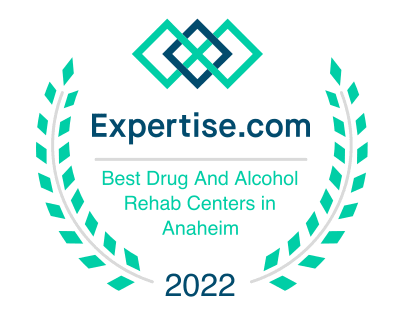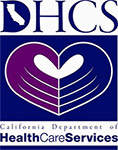Fentanyl-related deaths continue to climb in the U.S. Nearly half of the 42,249 people that died from an opioid overdose in 2016 had fentanyl traces in their system, according to a research letter published in JAMA.
Reports show that synthetic opioids, such as fentanyl, have become the most prominent drug associated with overdose deaths in the US.
2016 Overdose Data shows synthetic opioids were involved in:
- 3% of cocaine-involved deaths
- 0% of benzodiazepine deaths (most commonly Fentanyl- Xanax)
- 8% of antidepressant-related deaths that year.
Fentanyl Related Deaths Are On The Rise In America
Compared with 2010, when only 14.3% (around 3000 people) of deaths were related to fentanyl, the growing fatalities take a huge role in the ongoing opioid epidemic. Additionally, the report places the blame on the increased death rate, on Fentanyl variability and availability, as well as its use in combination with illicit drugs.
Fentanyl Patch Doses, Strength, and Withdrawal
A Fentanyl Patch (DURAGESIC) comes in a rectangular transparent unit with a protective liner and two functional layers. This medication is only for use in patients who are already opioid-tolerant. The amount of fentanyl released from each transdermal patch per hour is proportional to its size. Also, common doses are 12, 25, 50, 75, and 100 mcg/h.
For instance, some of the most serious side effects include:
- Slow heart rate
- Weak or shallow breathing
- Confusion
- Hallucinations
- Unusual behavior
- Fainting spells
- Cold and clammy or pale skin
Because of its potency, Duragesic has a high risk for addiction, abuse, and overdose, even at recommended doses.
Fentanyl Withdrawal Symptoms
The severity and length of the withdrawal syndrome or acute abstinence syndrome will depend on the degree of physical dependence. When someone uses any opioid drug, a considerable chemical change occurs. The central nervous system is also compromised and so is the neurotransmitters’ function. Withdrawal syndrome begins when the person discontinues the drug use. Then, the brain starts struggling to restore balance. Physical symptoms may be flu-like but often very intense. For example, some of these symptoms are:
- Nausea and/or vomiting
- Diarrhea
- Joint and muscle pain
- Elevated heart rate
- Hypertension
- Increased respiratory rate
- Insomnia
- Anxiety
- Pupil dilation
Because of the potency of Fentanyl and the intensity of the withdrawals, it’s not recommended to detox “cold turkey,” especially without medical supervision. The safest and most successful opioid detoxification treatment is undergoing a medical detoxification.
Safest Fentanyl Treatment
Ultimately, the safest opioid detox is in a hospital setting. A place where many medical specialists are available and can monitor vital signs and withdrawal symptoms around the clock. The detox phase typically lasts about 7-10 days, but some people may need more or less time, as medical detoxification and withdrawal symptoms are unique for each individual.
Although Fentanyl dependence can be rapidly treated with medical detox or Anesthesia Rapid Detox, depression and emotional difficulties and lack of pleasure can linger due to the disruption of dopamine and other pleasure-inducing neurotransmitters.
Craving may also persist, although Naltrexone therapy has been very successful in eliminating the physical desire for the drug.
Speak With an Addiction Specialist
Speak With an Addiction Specialist
Contact us to learn more about what alcoholism treatment options are available, and which one is the right one for you.
[phone]
Is This an Opioid Crisis or a Distress Crisis?
The misuse of opioid drugs including prescription painkillers, heroin and synthetic opioids like Fentanyl are the cause of more than 115 deaths daily in the US. This issue has become one of the most serious public health crises in the last decade. The devastating consequences continue to grow, including overdoses, neonatal abstinence syndrome and spread of infectious diseases including HIV and hepatitis C.
More than 2.5 million people are currently addicted to opioids in the United States. In the last decade, studies show a persistent narrative is that the epidemic was brought on by the lack of family-supporting jobs for working- and middle-class Americans, who then turn to drugs to self-medicate the pain and distress. And it is true that the counties that experienced the most dramatic economic decline between 1999 and 2015 had also seen the most significant increase in opioid addiction and overdose deaths. The rise in opioid deaths in Appalachia and the Rust Belt are the perfect examples of the crisis connection with the economic decline.
The combination of the economic issue, lack of border patrol and pharmaceutical companies’ control caused heroin to flood our streets and young adults to become the new victims in this crisis. Hopefully, with the improvements in the economy, the advances in medical science and the addition of hundreds of thousands of jobs in the last year, the emotional distress will decline. Moreover, If we could add more education, mental health care, and more effective drug treatment, we might be on our way to overcoming this crisis.
Speak With an Addiction Specialist
Speak With an Addiction Specialist
Contact us to learn more about what alcoholism treatment options are available, and which one is the right one for you.
[phone]
References:
https://www.drugabuse.gov/drugs-abuse/opioids/opioid-overdose-crisis
https://www.ncbi.nlm.nih.gov/pmc/articles/PMC5481299/
http://fortune.com/2018/07/02/fentanyl-is-causing-almost-half-of-all-overdose-deaths-research-shows/
Reviewed by Clare Waismann, CATC, Founder of Domus Retreat
All topics for the DomusRetreat.com blog are selected and written based on high standards of editorial quality and cited source material. Clare Waismann, CATC and founder of Domus Retreat and Waismann Method®, reviews all articles for accuracy, credibility and relevancy. Moreover, Clare Waismann is an authority and expert on opioid dependence and related topics covered on the DomusRetreat.com blog. One of Domus Retreat’s specialists also reviews some articles depending on their area of expertise. For additional information and disclaimers regarding third-party sources and content for informational purposes only, please see our Terms of Service.







